Description and features of growing blackroot
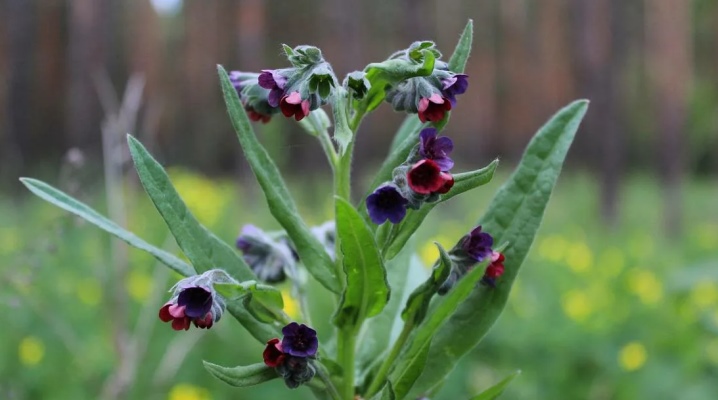
Blackroot can act as both a medicine and a poison that gets rid of rodents. It is very easy to grow such a multifunctional plant on your own.
Description of the plant
Blackroot is a herb that is both poisonous and medicinal. The representative of the Burachnikov family has a lot of names: red henbane, live grass, cat soap, chicken blindness, black root and many others. In Latin, the name sounds like Cynoglossum, or "Cinoglossum". This weed looks pretty unremarkable. In height, the plant hardly exceeds 1 meter, and the diameter of the brown root is limited to 2.5 centimeters.
A couple of straight stems branch out at the top. The lanceolate leaves are strongly pubescent below, the basal leaves sit on long petioles, and the upper ones are located directly on the shoot. Flowers are collected in paniculate inflorescences. The fruits of the culture are represented by rounded nuts, whose surface is covered with thorns. They ripen at the end of August - beginning of September.

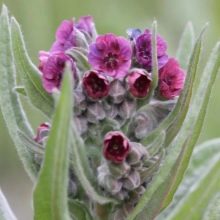
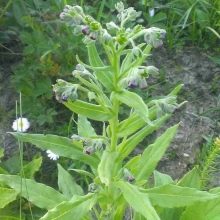
It is also worth mentioning that in the first year of life, the plant usually only forms rosettes of leaves, and in the second year it already blooms. A characteristic feature of all parts of the plant is their unpleasant odor.
Where does it grow?
Blackroot grows actively in the European part of Russia, Siberia and the Caucasus. It is also possible to find culture in the regions of Central Asia. In the wild, shrubs usually take place on hilly slopes, river cliffs, and along roads. As a weed, the plant can live even in wastelands.
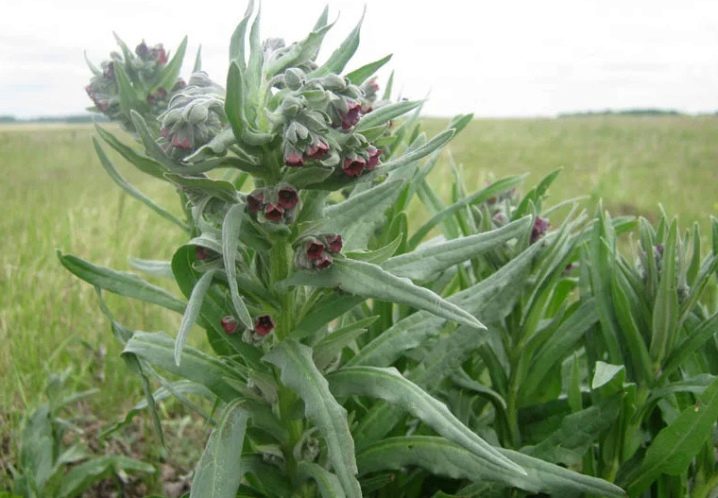
Types and varieties
Despite the fact that in total, scientists distinguish more than 80 varieties of black root, no more than a dozen of its species grow in Russia. Blackroot pleasant is an annual, but still loved by gardeners. A neat bush reaches 50 centimeters in diameter. Blooming, it is covered with very beautiful inflorescences of a bright blue hue. Blackroot Cretan lives in the warmest regions of Russia. As it blooms, the color of its petals changes from white to pink or blue, and then stops at lilac.
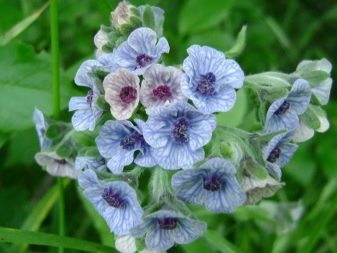

Germanic blackroot begins to bloom at the end of May. It is characterized by soft villi over the entire surface, elongated leaf blades and small pinkish flowers. Blackroot medicinal reaches a height of more than a meter. Its branching shoots are covered with red-purple flowers.
It should be mentioned that only this plant species can be used as an insecticide.
Blackroot spread out can have flowers of absolutely any shade characteristic of a given culture.
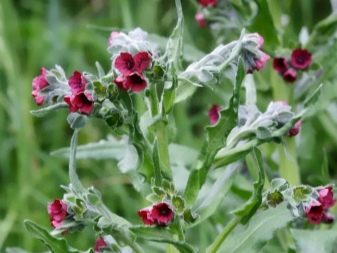
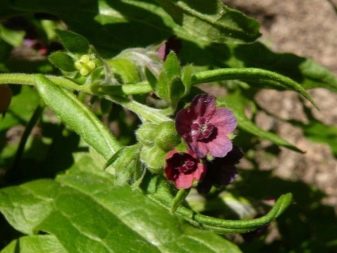
Landing
Sowing seedlings is carried out in early spring. The containers are filled with nutrient soil and irrigated abundantly with water. Small grooves about 3 centimeters deep are formed on the surface, which are evenly filled with seeds. Then the depressions are covered with earth, and the container itself is rearranged in a well-lit and heated place. If desired, the plantings are covered with glass or cling film until the emergence of shoots.
Until the seedlings get stronger, it is better not to water them from a watering can, but carefully spray the soil with a spray bottle. When permanent leaves begin to appear on the plant, the container with the black root can be hardened, that is, taken out into the fresh air for more and more time.At the same moment, specimens are allowed to dive. When the soil on the street dries out after the snow melts, and the heat becomes constant, it will be possible to transplant the plant into open ground. When distributing the specimens over the garden, it is necessary to maintain a gap of 30 centimeters between them. Since the culture is not afraid of small temperature fluctuations, it will not need additional shelter.
If the gardener plans to transplant a wild plant to his site, then only a young specimen should be used, extracted along with a small earthen clod. The new habitat of the black root is pre-fertilized with ammonium nitrate. It is recommended to dig out wild weeds in early spring.

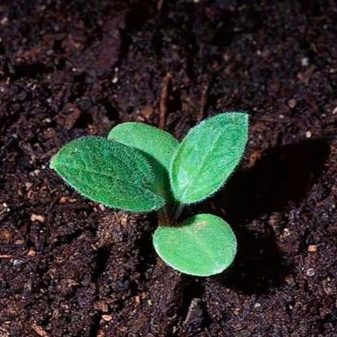
Care
Cultivation of blackroot is not particularly difficult, because, in fact, it is a weed. However, if the gardener prefers to grow a bush for decorative purposes, then he will need to carry out a number of mandatory measures. When growing a plant on the street, it is necessary to choose remote, well-lit areas, which are characterized by slightly acidic soil. A large amount of alkali is necessarily normalized by limestone. If the shrub is planted in a partially shaded place, then it will also develop well, increase growth, but bloom less abundantly. Constant shadowing has a negative impact on culture.
A plant that does not receive the required amount of sunlight withers, losing both its attractive appearance and special medicinal properties. The shoots of such a bush are excessively stretched, and the leaves droop. The plant is not afraid of high and low temperatures, which cannot be said about powerful gusts of wind that can bend or even break the stem of a growing black root. To prevent such a situation, the plant is timely fixed on the support.
An unpretentious culture can exist for a long time without watering, but if the dry period drags on, then the growth of the shrub will slow down. Therefore, it is customary to irrigate the drug as needed.
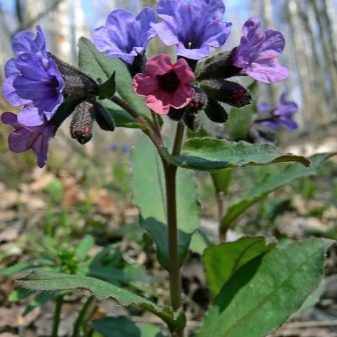

The culture does not react well to stagnant water, therefore, when planting, it will have to organize a drainage layer at the bottom of the hole. Watering is carried out as needed, which approximately corresponds to the frequency of 1 time per week. Irrigation is doubled when inflorescences are set on the crop. When all the fruits are ripe, the introduction of liquid is gradually reduced, and resumes the next spring. Annual blackroot varieties do not require fertilizers, and perennials only need them once every 2 years. The culture reacts equally well to organic matter and to mineral compositions, but it is better to use them only in liquid form. The nutrient mixture is poured under the root so that the spray does not fall on either the leaf blades or the buds.
It is not necessary to prune the plant, but collection or pruning of fruits, as well as spring cleaning of dry grass, are mandatory. Before winter, perennials are completely cut off, and only a fragment a few centimeters high is left above the surface.
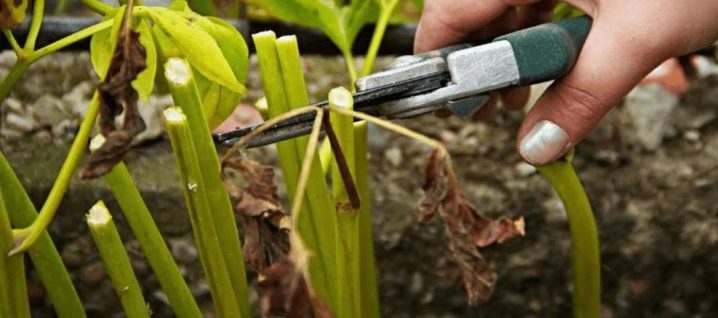
If especially severe frosts are observed in the region, then it is worth thinking about additional shelter from spruce branches, dry grass or a cut aboveground part. When the temperature rises again, the covering material can be removed.
Reproduction
Wild varieties of blackroot reproduce independently by self-seeding. However, in order to grow a culture at home or to get a hybrid, you have to use seeds or cuttings. The seed is harvested as soon as it ripens: it turns brown and the existing hooks harden. The grains should be stored in dry bags. It should be mentioned that the culture blooms in summer: most from the beginning of June, and a small part in August. This stage of the growing process is accompanied by the appearance of paniculate inflorescences hanging down. Small flowers are colored white, pink or lilac.
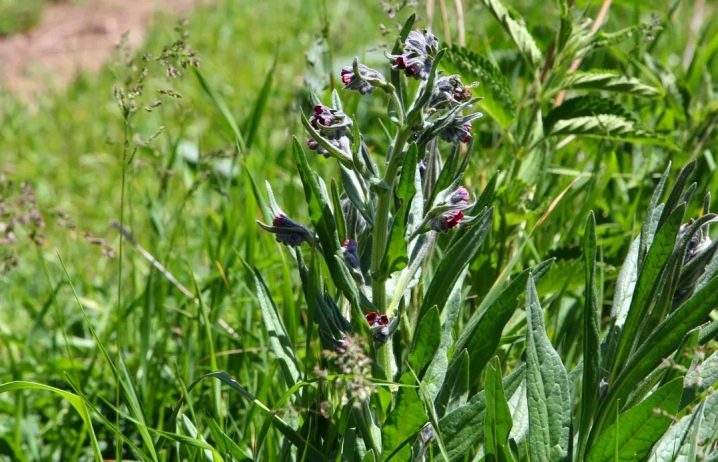
Where is it used?
Blackroot medicinal is actively used in folk medicine for the treatment of various kinds of ailments. The roots and laminae have analgesic properties, relieve cramps and are used as an expectorant. Lotions and compresses based on the plant can accelerate the healing of the skin with burns and bites, as well as furunculosis. To normalize the activity of the liver, a healing infusion of a teaspoon of herbs and 250 milliliters of boiling water is used. It is believed that a decoction of a mixture of dry leaf blades and crushed rhizomes can slow down the development of cancerous tumors. A tincture of dry wine is prepared for rheumatism, and an aqueous extract of leaves and seeds helps with diarrhea.
The second main purpose of the black root is an insecticide and a preparation for the destruction of rodents. The stems and underground parts are laid out in the basement, cellar or shed, and the crop seeds are spread across the floor of the utility rooms. In addition, you can tie the dried stems to the trunks of fruit trees, or fill the planting material straight into the holes of the rodents. The spaces in which the crop is to be stored are pre-treated with an infusion based on blackroot. To do this, 100 grams of dry roots are poured with 500 milliliters of freshly boiled water, infused for a couple of hours and filtered.
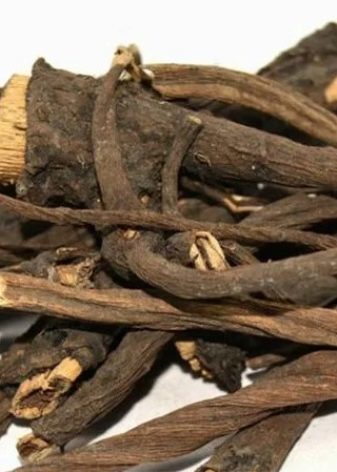
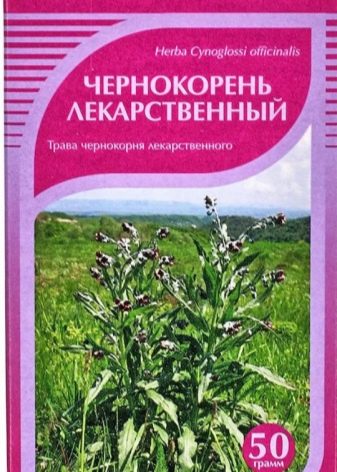
Using a spray gun, the finished mixture is distributed over surfaces, crevices and corners. Another option was invented by beekeepers - they limit their possessions to the "wall" of the blackroot, which protects the hive from the invasion of mice. It should also be mentioned that with the help of the roots of the plant, you can give the fabric a red tint.
Precautionary measures
Since black root is a poisonous plant, it should be used with great care. It contains cinoglossin, a component whose effect on a living organism is similar to curare poison, only of lesser strength. The longer contact with the plant is, the more dangerous the black root becomes. And it is allowed to prepare, and lay out, and rip off the drug, only having previously protected yourself with gloves. After work, it will still be correct to wash your hands with soap and water - the resulting alkaline environment effectively eliminates all the consequences of contact with poisonous leaves or shoots.
It is important that both children and pets do not have access to blackroot. It is necessary to ensure that the plant does not even accidentally fall into the blanks for livestock, because exceeding the permissible dose leads to the death of living beings. The crop should not be planted in places where livestock graze, as well as where hay is being harvested. Plants are taken care of with gloves, especially if they interact with foliage and roots.
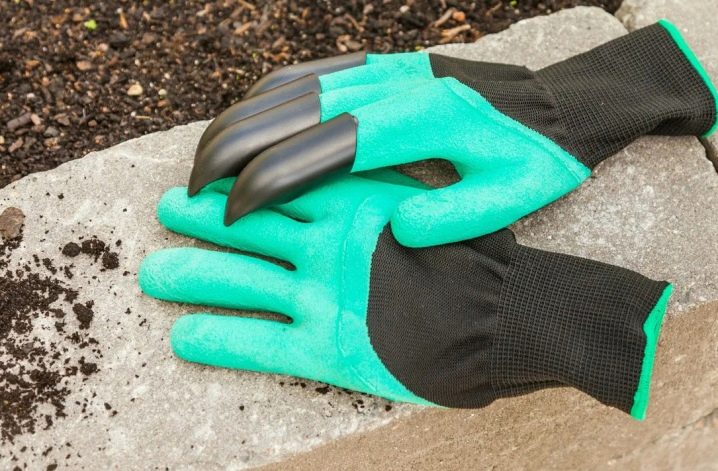
In no case should blackroot juice get into mucous membranes or eyes. All herbal medicines are prepared in accordance with the recommendations of the professionals.













The comment was sent successfully.